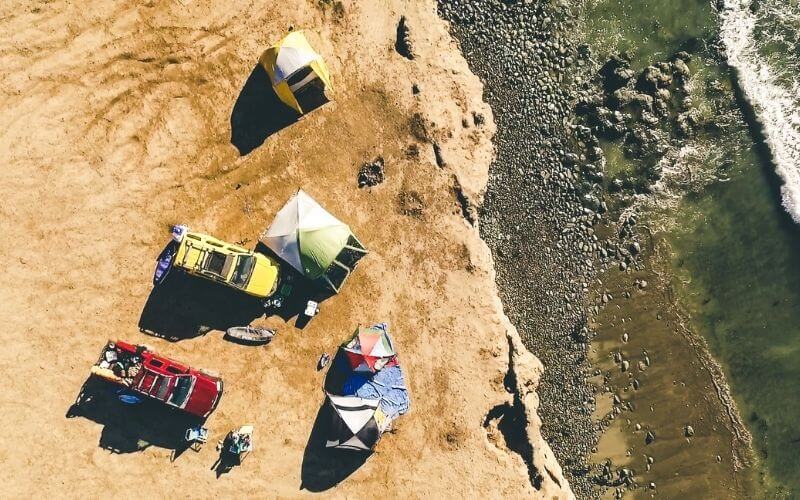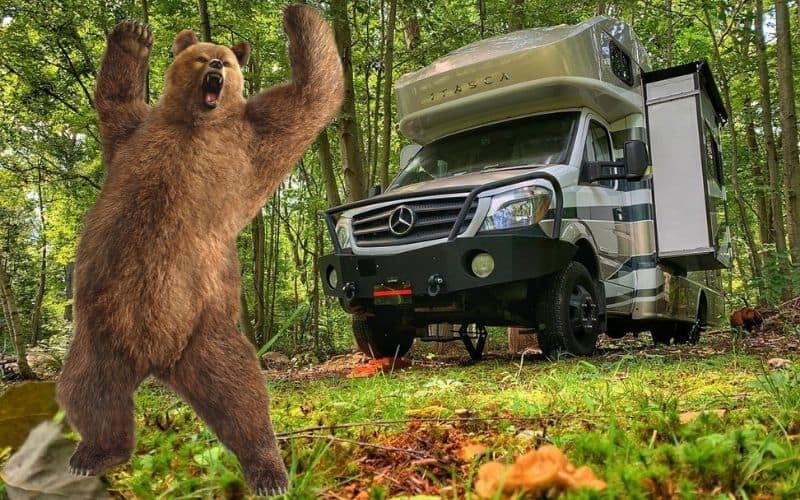Whether you’re living full-time in your RV or planning a road trip, it’s important to know the capacity of your camper’s holding tanks.
Not only do you need to know how much fresh water you can carry for drinking, washing dishes and showering, you also need to know the size of the RV’s tanks for gray water and sewage.
Most campgrounds offer hookups for fresh water and some campgrounds even have dump stations where you can empty your gray and black water tanks.
However, it’s still important to know the capacity of your tanks so that you can plan accordingly, especially if you’re traveling as a family or group.
The last thing you want is to end up at a campground that doesn’t have a dump station, only to find that your sewage tank is full.
You might also find yourself at a campsite without hookups, and if your fresh water tank is low or empty, you’ll have to buy extra water for drinking and washing up.
You can always check your tanks to learn the holding size, but to help give you an idea, I’ve done some research to show you the typical size and capacity of RV holding tanks in this post.
The size of your holding tanks will depend on the size of your RV, but on average, your fresh water tank will hold 20 to 100 gallons, your gray water tank will hold about 50 gallons, and your black water tank will hold between 18 and 64 gallons.
What Types of Holding Tanks Do RVs Have?
Most RVs and campers have three types of tanks on board:
- Fresh Water tanks that supply water to your sinks, shower(s), and in some cases, your toilet
- Gray Water tanks that hold the dirty water that drains from your sinks and shower(s)
- Black Water tanks that store the sewage from your toilet
It’s smart to empty your gray and black water tanks before they get too close to the full level.
Most RVs come with a sensor that will tell you when it’s getting full, but if you don’t have a sensor in your camper, you’ll need to keep an eye on the gray water tank so you can empty it before it fills up.
I’ll explain how to empty your tanks later in this post.
How Can I Tell The Capacity of My RV’s Tanks?
You can usually just open your tank storage area to see what each tank’s capacity is, but this isn’t always the case.
If the tank capacity isn’t legible on the tank itself, you might be able to find the sizes in your owner’s manual.
Or, you can look up the make, model and year of your RV to find the tank capacity numbers in an internet search.
If you’re buying an RV and want to know the tank sizes, the manufacturer or seller’s website will usually tell you the capacity.
RV manufacturers will sometimes list the capacity of each type of tank individually, and other times they will just note that the water tank size is something like 75-60-50.
This display format is always in reference to your fresh water tank size, followed by the size of your gray water tank and finally, your black water tank.
So in this example, you can carry up to 75 gallons of fresh water, your gray water tank has capacity for up to 60 gallons, and you must empty your black water sewage tank before it reaches 50 gallons full.
What is the Typical Gallon Capacity of an RV’s Holding Tanks?
Generally speaking, larger RVs will have larger holding tanks, while tanks in smaller campers will have less capacity.
However, this isn’t always the case, since some large RVs are designed to accommodate fewer people.
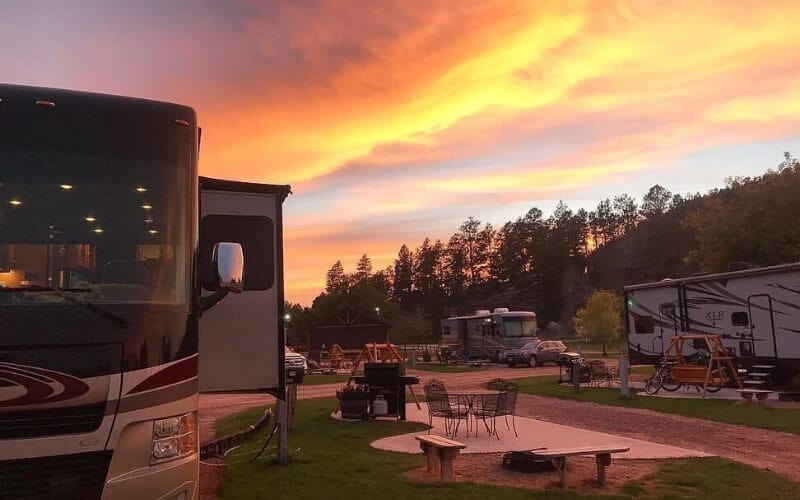
Since Class A RVs are the largest campers, holding tanks in these vehicles will be larger, while Class B RVs and camper vans will typically have the smallest capacity.
Tank sizes also vary by type, with fresh water tanks having the largest capacity, and gray and black water tanks holding less waste.
Average Size of Fresh Water RV Tanks
Depending on the size or class of your RV, your fresh water holding tank may hold between 20 and 100 gallons.
The size of fresh water tanks in Class A RVs is the largest, at between 72 and 100 gallons.
In the next size down, fifth wheel travel trailers usually have fresh water tanks that hold 50 to 92 gallons of fresh water.
Class C RVs come in a wide range of sizes, so their fresh water tanks may hold between 35 and 60 gallons, and most travel trailers that are not large fifth wheelers have about the same capacity.
As the smallest RVs, Class B RVs and camper vans usually hold about 16 to 40 gallons of fresh water if they have plumbing systems at all (some do not).
Average Size of Gray Water RV Tanks
The size and sleeping capacity of your RV will often also affect the size of your gray water tank.
On average across all RV classes and travel trailer types, your gray water tank will have capacity for about 50 gallons, with Class A and fifth wheel trailers at the higher end of the scale and Class B at the lowest end of the scale.
A gray water tank in a Class A RV will usually hold between 40 and 65 gallons. In fifth wheel trailers, the range is about the same, but some trailers hold as much as 93 gallons in the gray water tank.
With a lot of different sizes and sleeping arrangements, gray tanks in Class C motorhomes may hold between 31 and 91 gallons.
Travel trailers also have a wide variety of sizes, and the gray tanks in smaller trailers may only hold 28 gallons, while the ones in larger trailers might hold as much as 78 gallons.
As the smallest RVs on this list, Class B motorhomes usually hold between 8 and 35 gallons in the gray water tank.
Average Size of Black Water RV Tanks
The black tank in most RVs will usually be smaller than the fresh and gray water tanks, but it can fill up faster depending on how much you flush, how much toilet paper you use, and of course, how much you use the toilet.
Size and capacity also depends on the size of your RV or camper, but on average, the black tank will hold between 18 and 64 gallons.
Fifth wheels usually have the largest black tanks, which can hold 39 to 88 gallons when full. The black tank in Class A RVs usually have capacity for 31 to 51 gallons.
Class C motorhomes, which come in a wide range of sizes, have black tanks that range in size from 27 to 63 gallons.
You might find larger tanks in bigger travel trailers, but generally, the black tank in these campers will hold between 28 and 42 gallons.
If your Class B RV has a black tank (and not all do), it’ll probably be between 10 and 26 gallons.
How Do I Empty My Gray and Black Water Tanks?
Your fresh water tank can usually be filled from the water hookup at your campsite, but the tricky (and sometimes gross) part of having a camper is emptying the gray and black water tanks.
Many RV parks and campgrounds will have an approved dump station for this process, but not all of them do.
So, if you’ll need to empty your tanks at the end of your stay, be sure to check with the campground to make sure they have one.
You might be able to find an approved RV dump station at a separate establishment nearby or on the way home as well.
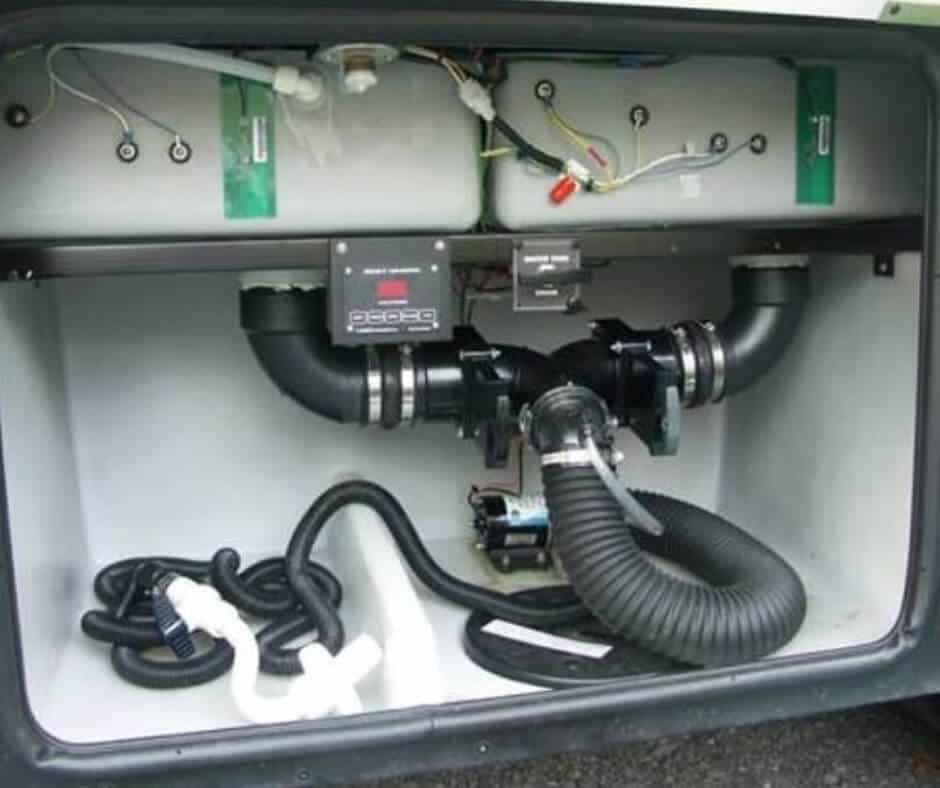
How to Maintain Your Holding Tanks
Well-maintained gray and black water tanks are the key to minimizing the ickiness of emptying them, as well as keeping odors down and avoiding gross build-up or clogs.
Here are some tips to keep your gray and black water holding tanks in the best condition:
-
Only use special RV toilet paper to maximize the space in your black tank and avoid clogs.
-
Before each trip, prep your toilet by filling it with water externally (such as with a bucket), adding a dose of black water tank treatment like Aqua-Kem, then flushing once.
-
Minimize water usage by taking military showers and/or using disposable dishes and utensils.
-
Try to let your gray water tank fill at least two-thirds before you empty it to reduce buildup and make the cleaning process more effective at eliminating scum.
-
Don’t leave your gray water tank totally empty, since scum will build up and cause odors and unsanitary conditions inside the tank and hose.
Steps for Emptying Gray and Black Water Tanks
It’s a good idea to always empty your black water tank before emptying your gray water tank, since the gray water is cleaner and can be used to rinse off the black water hoses.
Plus, who wants to save the icky, worst job for last? Best to get it over with.
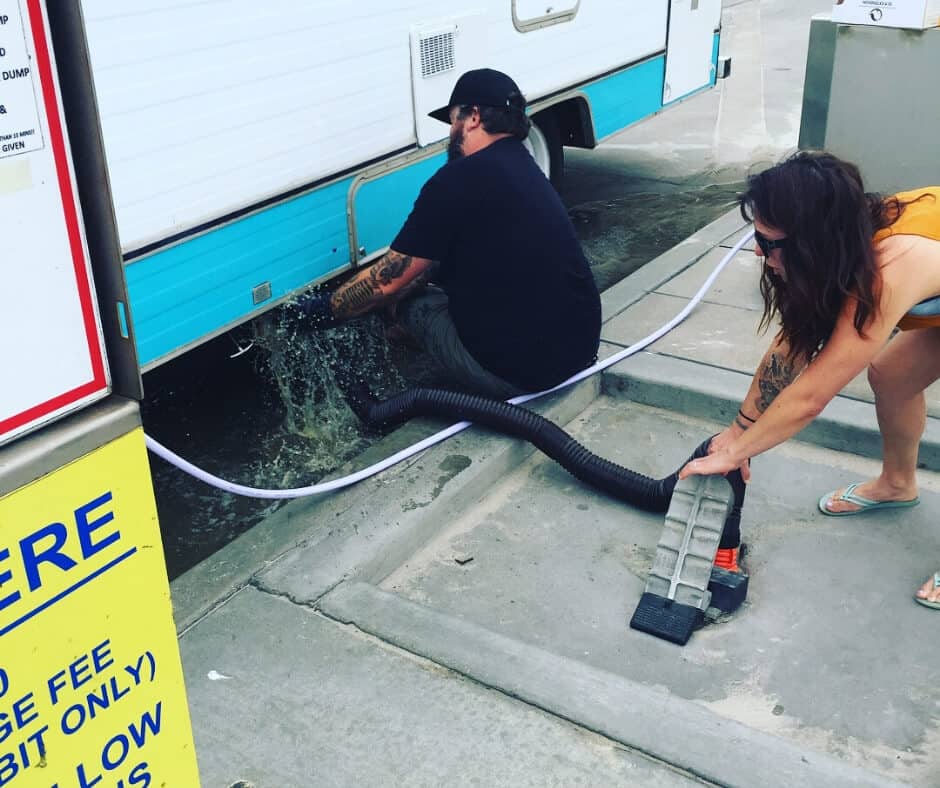
Here are the steps to take when emptying your gray and black water tanks:
1. Your RV’s sensors should let you know when your tanks are getting full and need emptying, but there are other signs as well. With a full gray water tank, your sink and shower may stop draining – granted, this may also be a sign of a clog, but either way, it’s time to empty it. If the black water tank is nearly full, the toilet might “burp” to discharge air in the tank.
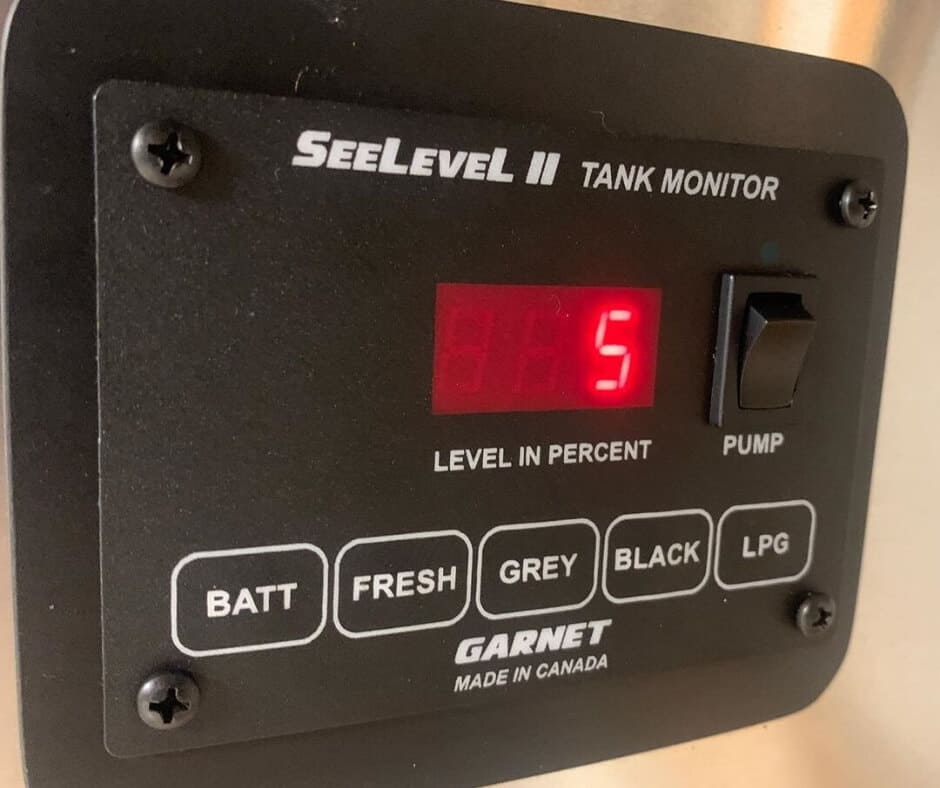
2. After you have found a dump station, put on your rubber gloves, remove the holding tank outlet cap, and hook up the waste hose between your camper and the dump station. Be sure that the sewer hose is at least four or five inches deep in the dump hole, and secure it firmly with something heavy on top to keep it in place.
3. Open the black water tank valve to drain your tank. Keep the gray tank valve closed while emptying the black water tank, so that you can use the gray water to flush out any solids that may have gotten stuck when emptying your black water tank.
4. When the black tank is empty, you can flush it by refilling it and draining it a second time. Close the black tank valve when you’re done, and repeat the process with your gray water tank.
5. After the gray water tank is empty, close the valve and disconnect the hose from your RV. Lift the disconnected end to drain any remaining water from the hose into the dump hole. If possible, run water through the hose to rinse it.
6. Disconnect the hose from the dump hole, and rinse the area around the hole to clean up any spills. Cover the dump hole and store your sewer hose.
7. Treat your black water tank with the necessary chemicals
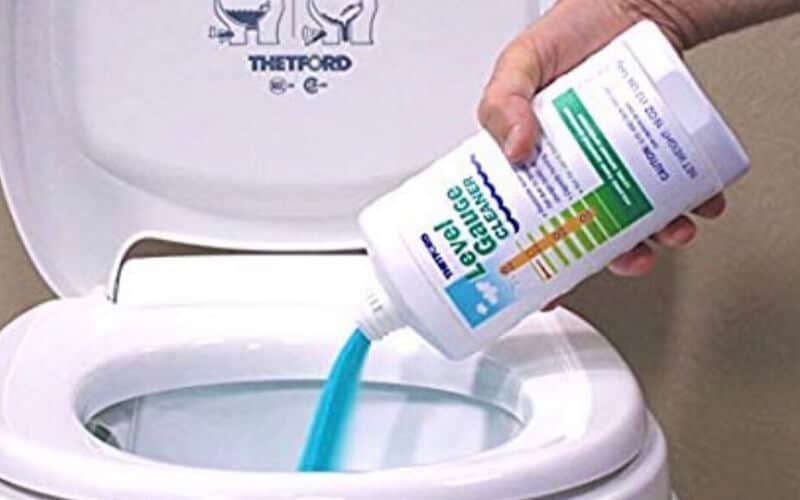
How to Deal With Clogs in Your RV Holding Tanks
It’s important to remember that your gray and black water tanks are not like your sewer system at home.
They can clog or fail if you flush or drain the wrong items, or if they are insufficiently maintained. For example, you should try to use strainers in your RV sink(s) and shower drains, to prevent solids from getting into the gray water tank.
You should always use special RV toilet paper, and never flush sanitary products or wet wipes (even the ones that claim to be flushable) to prevent clogs in your black water tank.
A clog may also develop in your black water tank if you haven’t been dumping it often enough, haven’t been cleaning the tank or using the correct treatment chemicals, or even if you’ve been dumping too often, since this leads to a dry tank.
If Your Black Water Tank Gets Clogged…
-
Always put on gloves and safety goggles to minimize your contact with human waste, which is not only gross but can make you sick.
-
Try dumping your black water tank first, since the draining process may remove the clog. If not, the clog might be in your waste pipe (between the toilet and the black water tank).
-
Pyramid plugs can develop in your waste pipe, which are caused by hardened waste build-up. To clear these clogs, you will need to use a toilet snake and a long, flexible auger to poke inside the toilet’s waste pipe until you feel like the pipe is clear. Note: only use toilet snakes or toilet wands that are designed for use in RVs, since normal ones may puncture your tank or your waste pipe.
If Your Gray Water Tank Gets Clogged…
-
Use a gentle cleaning treatment such as a mild dish detergent and hot water to flush your pipes and break down any build-up. Let the hot water run, then dump your gray water tank when finished.
-
You can also deep-clean your gray water system by running a heavily diluted bleach solution through the pipes and in the tank, itself. Consider adding ice to the tank, and go for a short drive to allow the ice to ‘scrub’ the inside of the tank.
-
There are gray water treatment chemicals available as well as ones for your black water tank, although they aren’t always necessary.


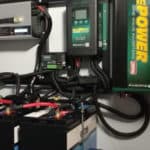
![The 5 Best RV Microwave Convection Ovens To Buy In [currentyear] 7 Best RV Microwave Convection Oven](https://www.rvingknowhow.com/wp-content/uploads/2020/07/Best-RV-Microwave-Convection-Oven-150x150.jpg)
